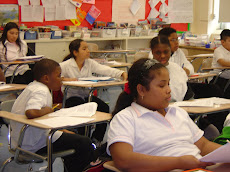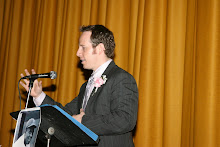With the great success of our collegiality and collaboration in supporting our students for the ELA exam, how do we make it happen for the Math exam? After reviewing some of the assessments we have given this year, it is clear our students still struggle with fractions and integers. They continue to add negative numbers to positive ones by adding the numbers to get either a larger negative or positive number. For example, they take -5 and add 3 to it to get -8 when the answer is -2. Although the teachers will spend time reviewing this concept again, it will help out greatly if other subjects could infuse integers into their daily lesson plans. Some examples would look like an essay comparing integers to money, putting up a question of the day in your own classroom, including a math problem in the “Do Now”. These techniques can be applied to mostly any concept in math. It’s just a matter of exposing the students to these problems and sharing with them a way to break down the question to find a solution.
Other methods that could support math are having worksheets, puzzles, and sodokuh available for students to complete when they finish their work. Make the answers available to them so they are able to check their work. Puzzles encourage students to collect information, create a plan to solve, and then put their plan into action. After, they need to assess to see if they achieved their goal of solving the puzzle. These are the same techniques they use to figure out word problems. The more exposure the students get with puzzles the more prepared they will be for the word problems they will face on the test. Sodokuh is a puzzle. It challenges the students to assess, compare, guess and check, and problem solve in order to complete the arrangement of the numbers.
Finally, the last strategy I would encourage is test taking techniques. The students need to be reminded how to approach multiple choice. One thing that separates math from the ELA when approaching multiple choice is when there are numeric answers, students can plug the options back into equations or expressions to identify the correct response. Also, the more students get familiar with reading and writing, they will be more confident to take on the word problems and short answer responses. Other ideas could also include pacing, skipping problems to return to them later, using their reference sheet as a source of information, and checking answers when there is extra time left over.
The students have been exposed to almost all of the basic concepts this year. It is evident from the results of our interim assessment, the students need to be reminded of some of the concepts. They also need a boost of confidence and an endurance level which will encourage them to read all of the directions and the questions to make sure the best answers are given.
Our students need us more than ever to prepare them for the state exam. We need to create a sense of urgency but also encourage them to believe in their capabilities. 21 school days are left which is not much time. If we all work together, we can take full advantage of the remaining time to help our students achieve at their true levels.
ATTENDANCE FOR THE WEEK
Monday: 88%
Tuesday: 90%
Wednesday: 80%
Thursday: 90%
Friday: 89%
Birthdays:
Esther DeJesus February 22nd
Sheryl-Ann Mayers February 24th
Phil Williamson February 24th
Quote of the Week
” The best thing about the future is that it only comes one day at a time.”
---Abraham Lincoln
Monday, February 2, 2009
Subscribe to:
Post Comments (Atom)





No comments:
Post a Comment